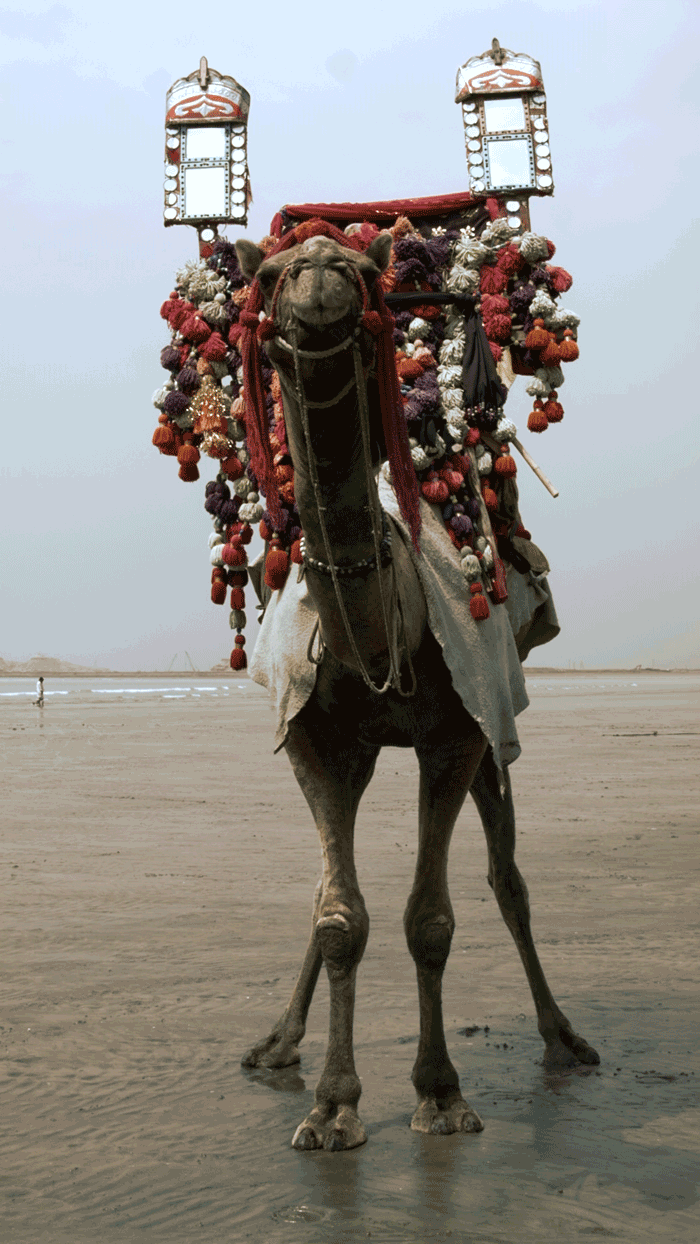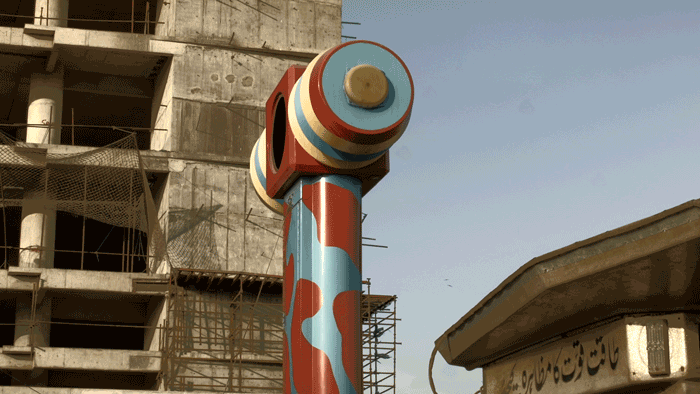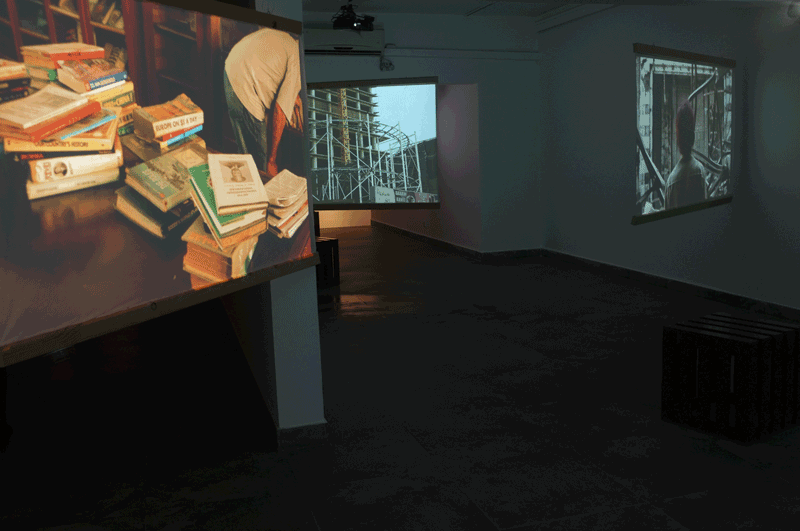Videosophy: Video installations by Bani Abidi
By Nusrat Khawaja | Art Line | Published 8 years ago
Video art may still be an experimental niche in Pakistan but the country has a video artist of international renown in Bani Abidi. Her work is part of the permanent collection of many world-class galleries and museums including the Guggenheim (New York) and the Tate (London).
Bani is currently an artist-in-residence in Berlin. She had occasion to bring her work to her home city of Karachi after an absence of six years, on the invitation of Gandhara Art Space. She is the second of three artists to feature in the Gallery’s 10th anniversary tripartite series called Look at the City from Here, which has been curated by Hajra Haider Karrar.
This exhibition titled the most amount of people standing still, screaming & laughing comprises several series from Bani’s oeuvre. In the digital print series titled The Ghost of Mohammad bin Qasim she uses incongruity to highlight individual and collective delusion. Security Barriers is a series of inkjet prints showing graphic renditions of barriers in the city — a wry comment on the small measures that offer superficial solutions to the profound security problems that afflict the city. A series of eight delicate watercolor portraits shows faces convulsed with laughter. Cryptically titled …and they died laughing, there is a provocative pun intended with regard to who has the last laugh.
Bani engages deeply with questions concerning identity, power and cultural space. Her intellectual and philosophical enquiries into the hypocritical norms that dominate people’s behaviour find creative expression through various media. She has increasingly focused on the use of video as a disruptive medium to highlight farce, paradox and absurdity.
There are several video series in the show which necessitate the use of multiple overhead projectors. The logistical production is an ambitious one and is carried out successfully by the gallery.
The central showpiece is the video series called Funland — Karachi Series II (2014), which premiered in Pakistan at the opening of this exhibition. It comprises a set of six documentary vignettes variously filmed at Funland, Clifton Beach, the Theosophical Society’s library and the burnt shell of Nishat Cinema. Individually, these vignettes have very little narrative, but collectively they present a grim, dystopian perspective of a city whose cosmopolitan public spaces once celebrated diversity in a benign social environment.
Bani was drawn to Funland because of her childhood memories of visits to the amusement park. However, she has withheld playfulness from the video of the vacant spinning ride. Shot from a bottom-to-top angle, the giant arms of the machine disturb the skyline with an invasive solidity. The implication is that the new social realities of Karachi include powerful land mafias who dominate the use of public space.
The video of the Theosophical Society Library shows a man packing books in cartons and squashing the filled cartons on storage racks. Free access to knowledge is predicated on open access to books but dismayingly this access, to which the library was an avenue, is no longer possible. The spectre of violence is too real and the video of a man shuffling through the rubble of Nishat Cinema delivers a post-apocalyptic feeling of doom. Clearly, religious fundamentalism and obscurantism impinge on mental space, suppressing independent thought.
Another screen shows a beach scene. Several chairs are arranged in rows but there is only one man present with his back to the camera. He looks out at the sea with its waves rolling in. It is a lonely scenario but it presents a sense of escape from the stifling crush of a mismanaged mega-city, strangled by greed and stupidity.
Bani reflects on the art of the video which she likens to theatre. It is dramatic and temporal. Unlike a painting, it is a medium that does not lend itself to being carried away and hung on a wall. She sees an inherent anti-acquisitiveness in her work with video.
Keeping in mind the theatrical analogy, it was fitting that the opening of the exhibition concluded with a dramatic reading by Zanbeel from Muhammad Asad Khan’s essay, Toofan kay markaz mein. The essay recalled the early days of Saddar, Karachi in an independent Pakistan.
The performance by Zanbeel, the artist’s work critiquing the city that is at the core of her philosophical engagement, and Gandhara Art’s anniversary theme aiming to highlight cities as spaces of hope and dialogue, synergised harmoniously at the opening of the most amount of people standing still, screaming & laughing.
Last but not least, one more screen in the Karachi Series must be mentioned. It is a tall, slim screen filled with the image of a camel on Clifton Beach. Resplendent in her party baubles and trinkets, she earns a livelihood for her keeper. She represents a link between the oceans of sand and the oceans of water. Here in Karachi, one wonders if she is trapped between the devil and the deep blue sea…





